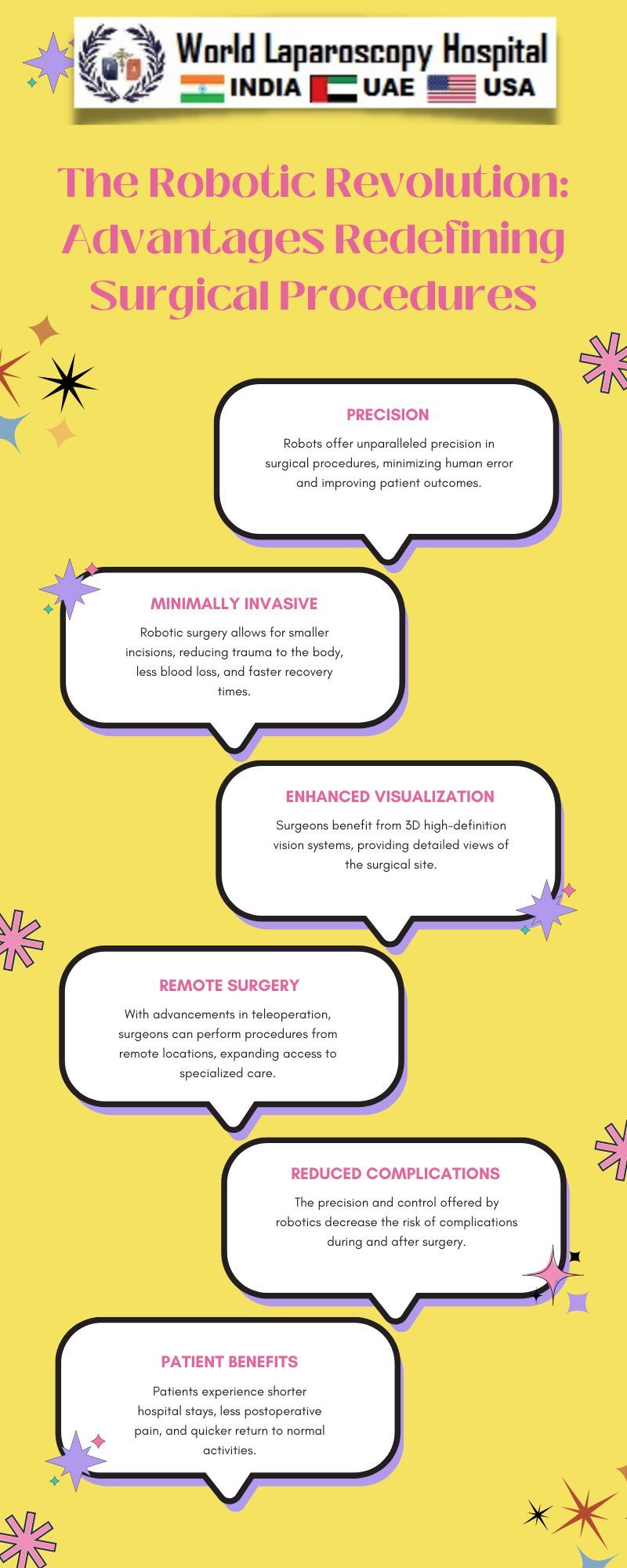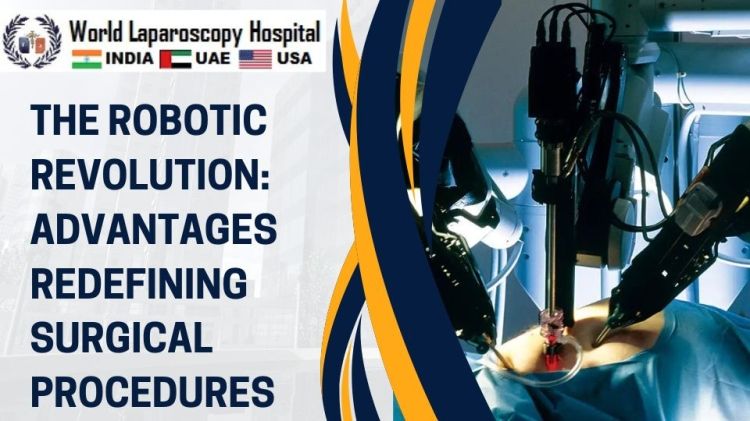The Robotic Revolution: Advantages Redefining Surgical Procedures
Introduction:
The field of surgery has undergone a remarkable transformation in recent decades, owing to the advent of robotic technology. With the integration of robotics into surgical procedures, a new era of precision, efficiency, and patient-centered care has emerged. This article explores the profound impact of robotics on modern surgery, examining the advantages that have reshaped traditional approaches and paved the way for innovative techniques and improved patient outcomes.

Evolution of Robotic Surgery:
The origins of robotic surgery can be traced back to the late 20th century, with the development of early prototypes aimed at enhancing surgical precision and control. The introduction of the da Vinci Surgical System in the early 2000s marked a significant milestone in the field, revolutionizing minimally invasive surgery. This system, with its robotic arms and advanced imaging capabilities, enabled surgeons to perform complex procedures with greater dexterity and accuracy than ever before.
Advantages of Robotic Surgery:
Enhanced Precision:
One of the most notable advantages of robotic surgery is its unparalleled precision. The robotic arms, controlled by the surgeon from a console, offer a range of motion and stability that surpass human capabilities. This precision is particularly beneficial in delicate procedures such as microsurgery and neurosurgery, where even the slightest deviation can have significant consequences.
Minimally Invasive Techniques:
Robotic surgery has facilitated the widespread adoption of minimally invasive techniques, which offer numerous benefits over traditional open surgery. By utilizing small incisions and specialized instruments, robotic procedures result in less trauma to surrounding tissues, reduced blood loss, and faster recovery times for patients. This minimally invasive approach has become the gold standard for many surgical procedures, including prostatectomy, hysterectomy, and colorectal surgery.
3D Visualization:
Robotic systems provide surgeons with enhanced 3D visualization capabilities, allowing for better depth perception and spatial awareness during procedures. This improved visualization is invaluable in complex surgeries where precise anatomical structures must be identified and manipulated with accuracy. By providing a more detailed view of the surgical field, robotics enhance the surgeon's ability to perform intricate maneuvers safely and effectively.
Ergonomic Benefits:
Performing surgery can be physically demanding for surgeons, often requiring prolonged periods of standing and repetitive movements. Robotic systems offer ergonomic benefits by allowing surgeons to operate from a seated position at a console, with ergonomic hand controls that reduce strain and fatigue. This ergonomic design not only enhances surgeon comfort but also enables longer and more precise surgical interventions.
Applications of Robotic Surgery:
Urology:
Robotic surgery has revolutionized the field of urology, particularly in the treatment of prostate cancer. Robotic-assisted laparoscopic prostatectomy (RALP) has become the preferred approach for many surgeons due to its improved outcomes and reduced risk of complications compared to traditional open surgery. Robotic technology also enables precise nerve-sparing techniques, which can preserve urinary and sexual function in patients undergoing prostate cancer treatment.
Gynecology:
In gynecology, robotic surgery has transformed the management of various conditions, including benign and malignant gynecologic tumors, endometriosis, and uterine fibroids. Robotic-assisted hysterectomy, in particular, offers advantages such as smaller incisions, less blood loss, and shorter hospital stays compared to traditional hysterectomy methods. These benefits translate to faster recovery times and improved quality of life for patients undergoing gynecologic surgery.
General Surgery:
Robotic surgery is increasingly being used in general surgery for procedures such as hernia repair, cholecystectomy, and colorectal surgery. Robotic-assisted techniques allow for greater precision and control, resulting in reduced complication rates and shorter hospital stays for patients. Additionally, robotics enable surgeons to perform complex procedures in challenging anatomical locations with enhanced visualization and maneuverability.
Cardiothoracic Surgery:
In cardiothoracic surgery, robotic technology has expanded the range of procedures that can be performed minimally invasively. Robotic-assisted cardiac surgery, including mitral valve repair and coronary artery bypass grafting, offers advantages such as smaller incisions, reduced blood loss, and faster recovery times compared to traditional open-heart surgery. These advancements have made complex cardiac procedures more accessible to patients who may not be candidates for conventional surgery.
Challenges and Future Directions:
Despite its numerous advantages, robotic surgery is not without challenges. The high cost of robotic systems and associated equipment can limit access for some healthcare institutions and patients. Additionally, there is a learning curve for surgeons transitioning to robotic-assisted techniques, which requires specialized training and proficiency to ensure optimal outcomes.
Looking ahead, ongoing advancements in robotic technology hold promise for further enhancing surgical procedures and expanding the scope of robotic surgery to new specialties and applications. Innovations such as haptic feedback systems, artificial intelligence, and augmented reality have the potential to further improve surgical precision, decision-making, and patient outcomes. Additionally, efforts to reduce the cost of robotic systems and increase accessibility will be crucial in ensuring equitable access to robotic surgery for patients worldwide.
Conclusion:
The robotic revolution has redefined surgical procedures, offering unprecedented levels of precision, efficiency, and patient-centered care. From enhanced visualization to minimally invasive techniques, robotics have transformed the practice of surgery across a wide range of specialties. While challenges remain, continued advancements in robotic technology hold promise for further improving surgical outcomes and expanding access to high-quality care for patients around the globe.


